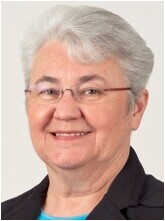 What should supply chain do first when crisis, disaster strikes?
What should supply chain do first when crisis, disaster strikes?
By Rick Dana Barlow
Because healthcare supply chain leaders have navigated and negotiated through so many health-related, terrorism-related and weather-related crises and disasters within the last two decades you'd think they'd be seasoned veterans by now.
Even with the last two COVID-19 pandemic-riddled years disrupting global supply chain operations like never before, the pressure not only remained but intensified.
For many healthcare organizations, communities, patients and staff looked to leadership. And leadership, in turn, looked to supply chain. And supply chain turned to leadership for empowerment over criticism and demands.
If this real-world experience had been some kind of management program test of resolve, the jury likely would be mixed as to their verdict — hovering somewhere between chaos, panic and resilience.
Looking back on what transpired during the last two years has some cherishing the hindsight to convert to foresight for the next crisis or disaster. The first move is critical.

Steve Kiewiet, FAHRMM, FACHE, COO, CCS Health, perhaps said it best: "Breathe."
He's not alone.
When crisis or disaster strikes the call to action must be decisive, but not knee-jerk. Most pull a team together.
"I take a deep breath," indicated Siobhan O'Bara, Senior Vice President, Community Engagement, GS1 US, Silver Sustaining Sponsor. "Then, I gather my team. I feel that effective leaders surround themselves with quality, complementary talent, and so for me, the best team is comprised of five people with specific contributions that I know I can trust to help assess a crisis and a corrective plan. Together, we can make well-informed decisions, create a plan and take appropriate action.

"The five roles I call upon in a crisis include (1) a creative thinker who will offer unique ideas and help us see possibilities that may not be obvious; (2) a person who knows our business and our technical capabilities extremely well; (3) a partner whose team will be affected or involved in executing solutions; (4) someone who can help us communicate effectively in addressing the problem; and (5) finally, I always want to include someone who will play devil's advocate, who will challenge our ideas, assess the worst impact of each potential resolution and help us work through them to find the best solution."
When a crisis occurs, the first move is to keep calm, advises Deborah Templeton, R.Ph., Chairman, Bellwether League Foundation, and Retired Chief Administrative Officer (CAO), System Support Services, Geisinger Health, Danville, PA.

"There will be more than enough folks in panic mode, and you can bring calm and stability to the situation," Templeton asserted. "Calling together key members of the team to outline a plan to address immediate needs is a good first step. Making sure everyone knows their role, assignments and how and when to communicate will be important. Sometimes role assignments may be different depending on the situation and need. Having frequent check-ins to help troubleshoot issues, get feedback on how things are going, give advanced direction and making sure things are covered is also important. Communication to those being served is also important so they remain confident that issues are being addressed and that things are being controlled as much as possible."
Tom Lubotsky, Bellwether Class of 2022, Senior Vice President, Supply Chain, Allina Health, Minneapolis, recommends quickly assessing the situation to determine the nature of the crisis and mobilizing toward the right approach to resolve.

"Too often we may jump to engaging other critical resources of the organization unnecessarily that really do not require their involvement," he cautioned. "Reaching out to key sources to gather the proper intelligence — including emergency management staff — can bring a balanced perspective needed to then mobilize the appropriate resources and framework to attend to the crisis at hand."
Fred W. Crans, Bellwether Class of 2020, Business Development Executive, Healthcare, St. Onge Company, York, PA, maintains a pool of people whose opinions and inputs he admires and respects.

"When something comes up, I go to them immediately to get perspective, knowledge, moral support and sometimes simply to vent," Crans said. "Everybody should have such a group. My personal group includes people across the entire spectrum of the healthcare supply chain — from honored industry leaders to people working in the storeroom — and each has earned a position of trust and respect with me."
A reasoned approach suits Dick Perrin, Bellwether Class of 2014, CEO, Active Innovations Inc., Annapolis, MD, just fine.

"Crises come in many forms and range from internal to external," he acknowledged. "The first step is to evaluate the needs to respond to the crisis, and then to assess system readiness and capabilities to meet the immediate and projected longer term needs. If it is a hurricane, the requirements are vastly different than for the COVID pandemic. Tornadoes are more localized, but the impacts on the supply chain can be devastating.
"In today's digital environment, the needs for continuity of power and telecommunication lines to sources of supply and capabilities to assess requirements for support and supplies are essential to being able to meet patient care needs," Perrin continued. "Of course, with the shift to home-based care, these capabilities will become more critical as will the ability to maintain a state of awareness and readiness to meet supply chain continuity."
Barbara Strain, CVAHP, Bellwether Class of 2021, Principal, Barbara Strain Consulting LLC, Charlottesville, VA, embraces pragmatism, too.

"Assess facts from fiction as they develop, collect data that can help inform next steps, create a departmental emergency management environment, pull a team(s) together internal to your control and invite key clinical and non-clinical department leaders to inform decision making and infuse the process with external resources, e.g., distributors," she noted. "Keep the line of communication flowing to the organizational command center and relay to your teams."
The first move is to identify who is in charge of mobilizing the recovery and help them in any way possible, urges Ray Seigfried, Bellwether Class of 2012, former Delaware State Representative, Dover, DE.

"If you are in control, you need to establish a communication network linked with everyone so communication moves forward effectively. Delegate recovery work to the right people to resolve the crises efficiently."